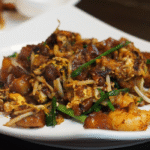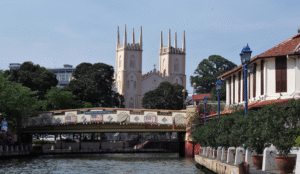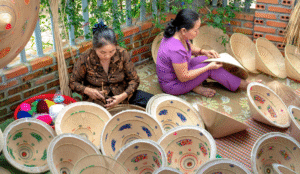Traditional Malaysia Art & Crafts: Songket, Keris, and Woodcarving
Malaysia is a land where history, heritage, and craftsmanship are deeply intertwined. From the vibrant textiles of the East Coast to the intricate blades of the Malay warriors, the country’s traditional arts offer a glimpse into its rich cultural tapestry. At the heart of these expressions lies the soul of Malaysia art — a living heritage that continues to evolve while preserving its core values.
In this exploration of Malaysia art, we will dive into three iconic forms that have stood the test of time: songket weaving, keris forging, and woodcarving. These are not merely crafts; they are embodiments of identity, history, and communal pride. Whether passed down through generations or revived by contemporary artists, the traditional arts and crafts of Malaysia remain an integral part of the nation’s cultural narrative.
Frequently Asked Questions ( FAQ)
1. What is the famous art in Malaysia?
One of the most famous traditional arts in Malaysia is Batik—a form of fabric art where patterns are drawn using wax and dyed in vibrant colors. Other well-known Malaysian arts include Songket weaving (luxurious handwoven fabric with gold or silver threads), woodcarving, and the Keris, a beautifully crafted ceremonial dagger. These arts are not only decorative but also deeply tied to Malaysian culture, storytelling, and identity.
2. Which country is #1 in art?
There isn’t a single country that holds the #1 spot in art since every culture has its own rich artistic history. However, countries like Italy, France, and China are often praised globally for their deep influence in the art world. Italy, for example, is famous for Renaissance art and masters like Michelangelo and Leonardo da Vinci. Each country contributes uniquely to global art—including Malaysia, with its own proud heritage of traditional crafts and contemporary creations.
3. Where does Malayan art come from?
Malayan art has its roots in the early civilizations of the Malay Archipelago, influenced by indigenous traditions, Islamic culture, Hindu-Buddhist kingdoms, and colonial powers like the Portuguese, Dutch, and British. Over centuries, this blending of cultures shaped a unique artistic identity—seen in textiles, carvings, architecture, and ceremonial objects that carry both spiritual and social meaning.
4. What is Malaysia famous with?
Malaysia is famous for its multicultural society, delicious food, breathtaking nature, and vibrant traditional arts. From the modern skyline of Kuala Lumpur to the ancient rainforests of Borneo, Malaysia is known for its diversity. Culturally, the country stands out for unique festivals, traditional dances, heritage crafts like Batik and Songket, and the warmth of its people and hospitality.
5. What is the art style of Malaysia?
Malaysia’s art style is a blend of traditional and modern influences, shaped by Malay, Chinese, Indian, and Indigenous cultures. Traditional Malaysian art is known for its geometric patterns, nature-inspired motifs, and symbolism. You’ll find this in Batik prints, woodcarvings, metalwork, and woven textiles. Modern Malaysian art often explores themes of identity, religion, and heritage—combining traditional techniques with contemporary expression.
Songket: Threads of Royalty
Songket is often referred to as the “fabric of kings.” Traditionally handwoven with gold or silver threads on silk or cotton, this textile is symbolic of wealth, nobility, and ceremonial prestige. It is believed to have originated from the Malay archipelago and flourished during the Malacca Sultanate, where it became closely associated with royal attire and festive garments.
Weaving songket is a meticulous process that requires immense patience and precision. Each piece can take weeks or even months to complete, depending on its complexity. The shimmering motifs often feature elements from nature — such as bamboo shoots, flowers, or celestial patterns — and carry symbolic meanings like prosperity, strength, and spiritual balance.
In Terengganu and Kelantan, songket production is still very much alive. Local artisans, many of whom are women, continue to weave using traditional methods. However, the practice is facing challenges. Younger generations are less inclined to pursue the craft due to its labor-intensive nature and limited commercial demand. Yet, thanks to cultural preservation efforts and the introduction of songket into modern fashion, this form of Malaysia art is experiencing a quiet revival.
The Keris: Blade of Power and Mysticism
The keris is one of the most distinctive weapons in Southeast Asian history. Far more than just a dagger, the keris is steeped in mythology, ritual, and cultural significance. It is widely regarded as a symbol of power, protection, and spiritual potency in Malay society.
Crafting a keris is an art form in itself. A master blacksmith, or pandai besi, forges the blade from layers of iron and nickel, producing a unique wavy pattern known as pamor. The number of waves, shape of the blade, and material used all contribute to the keris’s intended function — whether for ceremonial purposes, battle, or status display.
In traditional belief systems, a keris is said to possess a spirit or aura. Some are considered “living” and are kept for generations, treated with reverence and often passed down as heirlooms. Rituals like anointing the blade with lime or oil during special occasions are still practiced in certain communities.
Today, the keris remains a revered item in Malay culture. It is frequently seen in royal installations, traditional dance performances, and museum exhibitions. As a piece of Malaysia art, the keris reflects the interplay between artistry, belief, and martial heritage that defines much of the traditional arts and crafts of Malaysia art.
Woodcarving: Crafting Stories in Timber
Woodcarving is one of the oldest forms of Malaysia art, deeply rooted in the cultural practices of both Peninsular Malaysia and Borneo. For centuries, skilled artisans have transformed timber into works of beauty and functionality — from elaborately carved doorways and mosque panels to decorative betel nut containers and ceremonial masks.
Malay woodcarving often features floral motifs and Quranic calligraphy, reflecting the influence of Islam. In contrast, the indigenous communities of Sabah and Sarawak, such as the Iban and Dayak, incorporate animist symbols, ancestral spirits, and natural elements into their carvings.
Each region has its distinct style. In Kelantan, you’ll find intricate foliage designs known as “awan larat,” while in Sarawak, totemic sculptures called “pantang” are used to mark communal longhouses. Despite regional differences, all share a deep respect for nature and spiritual meaning behind the materials and symbols used.
Today, woodcarving remains an essential form of Malaysia art, often taught in vocational schools and practiced in artisan villages. While modern tools have accelerated production, many carvers still prefer traditional hand tools to maintain authenticity and precision. As tourists seek genuine cultural experiences, woodcarving continues to thrive as both a livelihood and an expression of identity.
Preserving the Past, Inspiring the Future
The survival of these crafts is no accident. Organizations like Kraftangan Malaysia and local heritage groups have played crucial roles in preserving and promoting Malaysia art. Through exhibitions, workshops, and government grants, artisans are encouraged to pass on their knowledge and adapt their skills to modern markets.
Education also plays a role. Schools and universities now include modules on traditional arts and crafts of Malaysia art, fostering awareness and appreciation among the youth. There are also national competitions and festivals that celebrate excellence in crafts, helping to keep the spirit of Malaysia art alive and relevant.
At the grassroots level, many communities are finding innovative ways to sustain their craft. Cooperative ventures, online stores, and cultural tourism initiatives have given artisans a broader platform to showcase their work. From international trade shows to social media campaigns, traditional crafts are reaching new audiences.
Contemporary Interpretations of Tradition
While preservation is essential, innovation is equally important. A new wave of Malaysian artists and designers are blending tradition with contemporary aesthetics to create fresh interpretations of Malaysia art. Songket patterns are now seen on sneakers and handbags; keris-inspired jewelry is being worn as fashion statements; and woodcarving motifs are used in modern interior design.
These hybrid forms serve dual purposes: they keep traditional techniques alive while making them accessible and appealing to younger generations. In doing so, they ensure that the traditional arts and crafts of Malaysia art are not confined to museums but continue to evolve with the times.
One such example is fashion designer Rizalman Ibrahim, who has incorporated songket into haute couture collections, bringing Malaysia art to the international runway. Similarly, artisan cooperatives in Sarawak have partnered with contemporary furniture brands to feature Dayak carvings in high-end décor pieces.
The Role of Arts in National Identity
In Malaysia, Malaysia art is more than just decoration. It is a vessel of cultural memory and a mirror of societal values. Traditional crafts are often tied to rituals, community practices, and spiritual beliefs. They provide continuity in a rapidly modernizing society and serve as anchors of national identity.
Government policies and tourism strategies increasingly recognize the value of Malaysia art in building cultural diplomacy and soft power. Batik, songket, and other indigenous crafts are promoted in international events, while local exhibitions draw attention to the richness of the nation’s artistic legacy.
For the younger generation, engaging with Malaysia art offers a sense of pride and connection. It reinforces the idea that heritage is not static but can be dynamic, expressive, and relevant. In an age of globalization, these crafts provide a unique cultural fingerprint that distinguishes Malaysia on the world stage.
Final Thoughts
From the golden shimmer of songket to the mystical presence of the keris and the storytelling depths of woodcarving, Malaysia art is a celebration of heritage, identity, and creativity. These crafts tell stories — of kings and warriors, of faith and folklore, of community and continuity. They represent not only Malaysia’s rich cultural landscape but also the resilience and innovation of its people.
While globalization and modernization present new challenges to traditional practices, they also create new opportunities. Artisans, historians, educators, and young creators alike are finding ways to rejuvenate traditional forms, ensuring that Malaysian traditional art is not just remembered, but continuously reimagined. The dynamic fusion of the old and the new is what makes the traditional arts and crafts of Malaysia so vibrant and enduring.
This commitment to cultural preservation is not just the responsibility of government agencies or heritage organizations — it is a collective effort. From the weaver in Kelantan to the woodcarver in Sarawak, from school children learning batik to tourists purchasing handwoven souvenirs, every individual contributes to the continuation of this artistic legacy. It is through this shared participation that Malaysia art continues to flourish.
Moreover, these traditional Malaysia art offer more than just aesthetic value. They provide economic sustenance for rural communities, foster intercultural understanding, and strengthen national pride. In a world increasingly dominated by mass-produced goods, the handmade nature of these arts stands as a testament to patience, skill, and individuality. Each stroke, weave, and carving tells a story that machines cannot replicate.
Cultural tourism plays a significant role in this ecosystem. Travelers are no longer content with passive sightseeing — they seek immersive experiences, like watching a songket demonstration or trying their hand at carving a simple motif. These interactions foster appreciation for the labor and love behind each craft, helping visitors form a deeper connection to Malaysian culture. They also support local economies, encouraging the continuation of artisanal livelihoods.
In educational settings, integrating Malaysia art into curricula can spark creativity and cultural awareness among students. Whether through hands-on workshops or digital storytelling, traditional crafts can be powerful tools to instill values of patience, respect, and identity. In this way, heritage becomes more than a subject — it becomes an experience.
Finally, it’s essential to recognize the emotional and spiritual dimensions of these crafts. A keris is not merely a weapon; it is a talisman imbued with meaning. A piece of songket is not just fabric; it carries the legacy of generations. A carved wooden door is not simply an entrance; it is a gateway into a cultural worldview shaped by centuries.
As we continue to move forward in this fast-paced, digital age, let us not forget to slow down and appreciate the hands, hearts, and histories behind the objects that define us. Malaysia art is not static — it evolves, adapts, and breathes. It is a living expression of who we are and where we come from. Let us celebrate it, preserve it, and pass it on — not just as artifacts, but as living legacies that inspire pride and connection across generations.
So, the next time you see a piece of Malaysia art such as songket fabric, a keris on display, or a carved wooden panel, take a moment to reflect on the hands that shaped it, the stories it holds, and the culture it represents. In doing so, you not only honor the past — you help carry it forward. of songket to the mystical presence of the keris and the storytelling depths of woodcarving, Malaysia art is a celebration of heritage, identity, and creativity. These crafts tell stories — of kings and warriors, of faith and folklore, of community and continuity.
As we look toward the future, preserving the traditional arts and crafts of Malaysia art becomes not only a matter of cultural pride but also a bridge between generations. Through education, innovation, and appreciation, Malaysia can ensure that its artistic heritage remains a living, breathing part of its national soul.
So, the next time you see a piece of songket fabric, a keris on display, or a carved wooden panel, take a moment to reflect on the hands that shaped it, the stories it holds, and the culture it represents. In doing so, you not only honor the past — you help carry it forward.
While globalization and modernization present new challenges to traditional practices, they also create new opportunities. Artisans, historians, educators, and young creators alike are finding ways to rejuvenate traditional forms, ensuring that Malaysia art is not just remembered, but continuously reimagined. The dynamic fusion of the old and the new is what makes the traditional arts and crafts of Malaysia art so vibrant and enduring.





